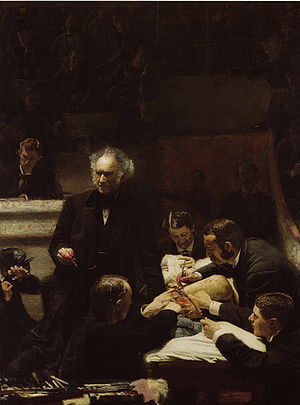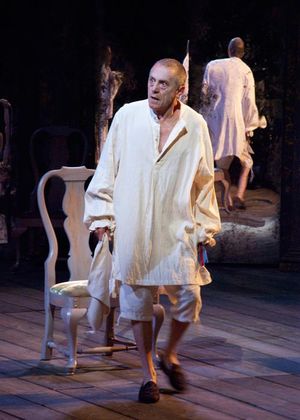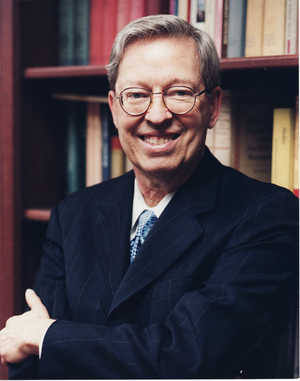Thomas Eakins’ “The Gross Clinic,” his most famous painting, has just been restored by conservators at the Philadelphia Museum of Art, which became co-owner of the painting (together with the Pennsylvania Academy of the Fine Arts) two years ago. This news reminded me that I first saw “The Gross Clinic” in person when it was on display at the Met eight years ago, and that I wrote a piece about the experience for The Wall Street Journal. (It was the prototype for what later evolved into the Journal‘s “Masterpiece” column.)
To celebrate the restoration of “The Gross Clinic,” here is my piece, reprinted for the first time since it was originally published in 2002.
* * *
Neville Cardus, the English music critic, spent World War II in Australia. Most Aussies then were well behind the cultural curve, and Cardus learned to his dismay that the centerpiece of the first concert he was to review for the Sydney Morning Herald was Beethoven’s Fifth Symphony, the “Mona Lisa” of classical music. What could he possibly say about a warhorse he’d heard at least a hundred times?
That night, though, he glanced around the concert hall and realized that at least half ot the audience had never before heard a performance of Beethoven’s Fifth. “To those Australians, in the Sydney Town Hall, the Fifth Symphony was a revelation,” he later recalled. “I found this a tremendous inspiration….the concert was for me an illumination and living proof that there are no hackneyed masterpieces, only hackneyed critics.”
 I thought of Neville Cardus the other day when I went to an exhibition of the paintings of Thomas Eakins at New York City’s Metropolitan Museum of Art. The centerpiece is “The Gross Clinic,” Eakins’ 1875 portrayal of an osteomyelitis operation. It’s one of the best-known American paintings of the 19th century, so I wasn’t expecting to be startled by it. “The Gross Clinic” is so well known, in fact, that I forgot I’d never really seen it in person, since it normally hangs not in a museum but at the Jefferson Medical College in Philadelphia, a bit off the beaten path of most critics.
I thought of Neville Cardus the other day when I went to an exhibition of the paintings of Thomas Eakins at New York City’s Metropolitan Museum of Art. The centerpiece is “The Gross Clinic,” Eakins’ 1875 portrayal of an osteomyelitis operation. It’s one of the best-known American paintings of the 19th century, so I wasn’t expecting to be startled by it. “The Gross Clinic” is so well known, in fact, that I forgot I’d never really seen it in person, since it normally hangs not in a museum but at the Jefferson Medical College in Philadelphia, a bit off the beaten path of most critics.
The Met has hung “The Gross Clinic” by itself on a darkish-blue wall, and as you step through the entrance, everything else in the gallery disappears. All you see is a huge canvas, eight feet tall and six and a half feet wide, encased in a heavy gold frame. The sheer size of “The Gross Clinic” caught me off guard–in my mind, it was a medium-sized work suitable for display in the waiting rooms of the doctors’ offices where it is still so often found–and I needed a few seconds to catch my breath and let the half-remembered details snap back into focus.
“The Gross Clinic” is set in the amphitheater of Jefferson Medical College. Four earnest-looking doctors in ties and jackets are clustered around a patient, their hands covered with blood as they probe his helpless body. Off to the left, a horrified woman shields her eyes. (She is thought to be the patient’s mother.) Meanwhile, Dr. Samuel Gross, a tight-lipped, balding surgeon-teacher who towers over the operating table like a colossus, lectures to the students surrounding him in tiers of ascending seats, a scalpel clutched in his bloody right hand.
To run across “The Gross Clinic” in an art book is anything but startling–movies and TV long ago accustomed us to close-up carnage–but to see the real thing up close is to feel as though you’ve been slapped in the face. Just for a moment, you can understand why the critics of 1875 were so horrified by so unsparingly candid a portrayal of the surgeon’s life. One squeamish critic called it “revolting to the last degree.”
First the shock, then the beauty: Eakins has turned this violent vignette into a complex yet perfectly balanced composition, guiding you from point to point with supreme finesse. Your eye is drawn irresistibly to the garish red blood on the hands of the surgeons–and to the spotlit forehead of Dr. Gross, leaping forward out of a somber sea of brown and black. Then you see the heads of the four doctors, arranged in a tight semi-circle. Then the frightened woman and, right behind her, a mustached clerk, taking down Dr. Gross’ words for posterity. Then the shadowy onlookers, among them Eakins himself, sketching the proceedings on a pad. (This Hitchcock-like cameo is hard to make out in many reproductions, but it’s as plain as day when you’re standing in front of the painting.)
As I gazed intently at “The Gross Clinic,” I suddenly became aware of two elderly ladies standing next to me. “Boy, they’ve come a long way in medicine!” one said. I smiled, but I knew she had a point. “The Gross Clinic” is more than just a work of art–it’s also a piece of social history. The radiant forehead of Dr. Gross is a potent symbol of the Victorian faith in the redemptive power of science, in which most 19th-century Americans were the truest of believers. Few of us have that kind of faith today: The horrors of the 20th century knocked it out of us. But Thomas Eakins had it, and he makes you feel it, too. That is part of the overwhelming effect of “The Gross Clinic,” as much as its dramatic composition or Rembrandt-like palette.
I walked down the steps of the Met, a little dazed by my encounter with a painting whose greatness had been dulled by familiarity, and asked myself, “How on earth could I possibly have thought I ‘knew’ ‘The Gross Clinic’? I didn’t know it at all!” That’s the way every critic should feel whenever he comes into the presence of an over-familiar masterpiece, be it Beethoven’s Fifth or “Romeo and Juliet.” For we can never fully “know” a great work of art. It is bigger than we are, bigger than life, which is why it offers the possibility of permanent renewal and refreshment. All we have to do is see it for the first time–every time.

 Some plays, including most of the best ones, are all but impossible to film, but a handful of memorable stage shows have been filmed so well as to discourage subsequent revivals. Nicholas Hytner’s 1994 film of Alan Bennett’s “The Madness of George III” is a case in point, for it was so effective that productions of the play in this country have since been few and far between. That’s what lured me to San Diego to see the Old Globe’s outdoor version, directed by Adrian Noble as part of the company’s 2010 Shakespeare Festival. It appears to be the play’s first American staging of any consequence since the National Theater’s production (on which Mr. Hytner’s film was based) toured the U.S. in 1993. All praise to the Old Globe for mounting it so stylishly–and proving that fine though it was on screen, “The Madness of George III” is even better on stage.
Some plays, including most of the best ones, are all but impossible to film, but a handful of memorable stage shows have been filmed so well as to discourage subsequent revivals. Nicholas Hytner’s 1994 film of Alan Bennett’s “The Madness of George III” is a case in point, for it was so effective that productions of the play in this country have since been few and far between. That’s what lured me to San Diego to see the Old Globe’s outdoor version, directed by Adrian Noble as part of the company’s 2010 Shakespeare Festival. It appears to be the play’s first American staging of any consequence since the National Theater’s production (on which Mr. Hytner’s film was based) toured the U.S. in 1993. All praise to the Old Globe for mounting it so stylishly–and proving that fine though it was on screen, “The Madness of George III” is even better on stage. Richard Harriman, the man who co-founded and directed the series and after whom it would later be named, graduated from Jewell in 1953 and joined its English faculty in 1962. Three years later he decided that the college ought to be in the business of presenting great performances. He extracted three thousand dollars from the administration and proceeded to book Edward Villella, Patricia MacBride, and Jan Peerce. Not long after that, Liberty, Missouri, the suburb of Kansas City where William Jewell College is located, had become known throughout America as the place where world-famous musicians tried out the programs they would later perform in New York.
Richard Harriman, the man who co-founded and directed the series and after whom it would later be named, graduated from Jewell in 1953 and joined its English faculty in 1962. Three years later he decided that the college ought to be in the business of presenting great performances. He extracted three thousand dollars from the administration and proceeded to book Edward Villella, Patricia MacBride, and Jan Peerce. Not long after that, Liberty, Missouri, the suburb of Kansas City where William Jewell College is located, had become known throughout America as the place where world-famous musicians tried out the programs they would later perform in New York.